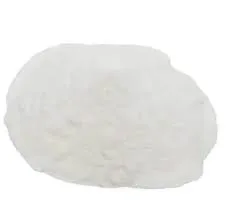
Жов . 31, 2024 17:02 Back to list
Exploring the Diverse Types of HPMC and Their Applications in Various Industries
Understanding HPMC Types A Comprehensive Overview
Hydroxypropyl Methylcellulose (HPMC) is a versatile cellulose derivative that has gained immense popularity in various industries, including pharmaceuticals, food, cosmetics, and construction. HPMC's unique properties make it an essential ingredient for many applications. This article will explore the different types of HPMC, their characteristics, and their uses.
HPMC is primarily classified based on the degree of substitution of hydroxypropyl and methyl groups. The most common types include HPMC K, HPMC E, and HPMC M. Each type varies in terms of viscosity, gel strength, and solubility, which makes them suitable for specific applications.
1. HPMC K (K Series)
HPMC K is known for its high viscosity and excellent film-forming abilities. It is commonly used in pharmaceutical formulations, particularly for sustained-release dosage forms. The K series demonstrates good thermal stability and is typically utilized in coatings, controlled-release tablets, and stabilizers for suspensions. Its high viscosity can also enhance the texture and consistency of food products, making it an essential ingredient in the food industry.
hpmc types

HPMC E has a lower viscosity compared to HPMC K and is more soluble in colder water. This type is widely used in the cosmetic industry for its thickening and emulsifying properties. HPMC E is often found in lotions, creams, and various personal care products, where it enhances the texture and stability. Additionally, it can be used in the formulation of dry polymer powders for paints and coatings, providing a smooth application and preventing sedimentation.
3. HPMC M (M Series)
HPMC M is characterized by medium viscosity and is versatile in various applications. It is commonly used in the construction industry as a thickening agent in mortars and adhesives. HPMC M enhances workability, water retention, and adhesion properties, which are critical for construction materials. Additionally, it is used in pharmaceuticals to improve the viscosity of liquid formulations and serve as a binder in tablets.
Applications Across Industries
The applications of HPMC extend beyond pharmaceuticals and cosmetics. In the food industry, it acts as a stabilizer, emulsifier, and thickener in sauces, dressings, and dairy products. In addition, it is utilized as a binder in dietary supplements and weight-loss powders.
In conclusion, the various types of HPMC—K, E, and M—each serve a unique purpose across different industries. Their ability to enhance texture, improve viscosity, and stabilize formulations makes HPMC an invaluable ingredient. As industries continue to evolve, the demand for these cellulose derivatives will likely grow, further reinforcing their role in innovative applications. Understanding the specific types of HPMC can aid manufacturers in selecting the right product for their needs, ultimately leading to improved performance and quality in their formulations.
-
Versatile Hpmc Uses in Different Industries
NewsJun.19,2025
-
Redispersible Powder's Role in Enhancing Durability of Construction Products
NewsJun.19,2025
-
Hydroxyethyl Cellulose Applications Driving Green Industrial Processes
NewsJun.19,2025
-
Exploring Different Redispersible Polymer Powder
NewsJun.19,2025
-
Choosing the Right Mortar Bonding Agent
NewsJun.19,2025
-
Applications and Significance of China Hpmc in Modern Industries
NewsJun.19,2025







